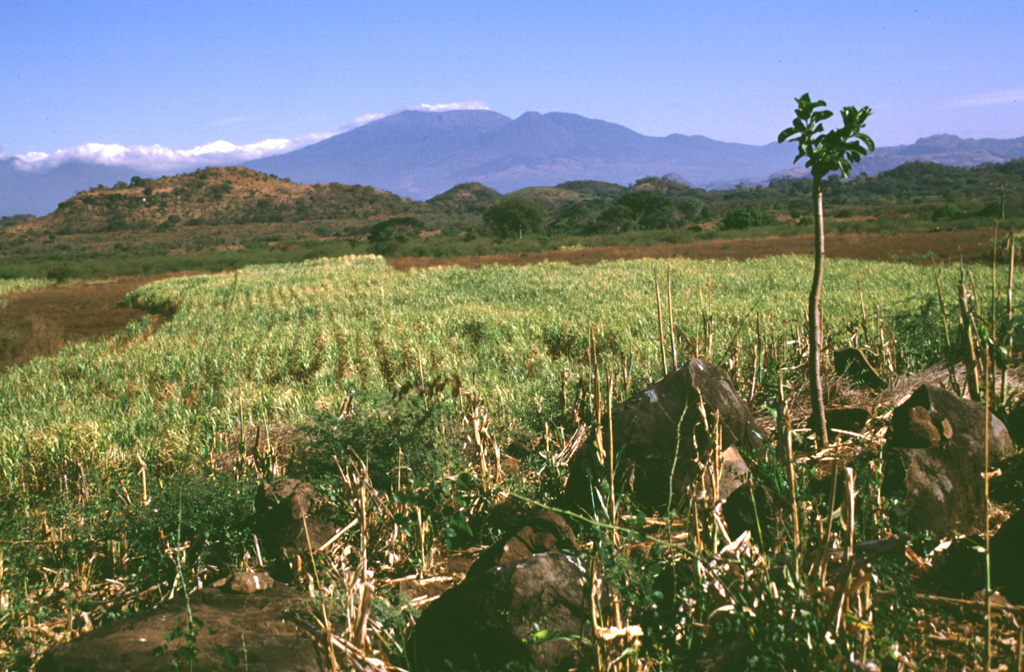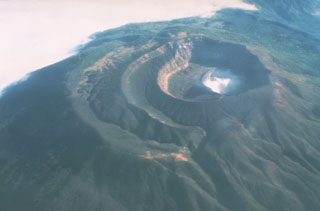Global Volcanism Program | Image GVP-07734

Santa Ana volcano, seen in the distance more than 30 km to the north, underwent catastrophic edifice collapse during the late Pleistocene. This produced a massive, highly mobile, debris avalanche that emplaced the boulders in the foreground and formed the small hummocks across the center. The larger hill to the left is composed of the older Bálsamo formation, which was surrounded by the avalanche. This avalanche was one of the largest known in Central America and traveled nearly 50 km from the volcano.
Photo by Lee Siebert, 1999 (Smithsonian Institution).
![]() This image is made available under the Public Domain Dedication CC0 license, but proper attribution is appreciated.
This image is made available under the Public Domain Dedication CC0 license, but proper attribution is appreciated.
Keywords: stratovolcano | debris avalanche deposit | hummock | deposit

Santa Ana
